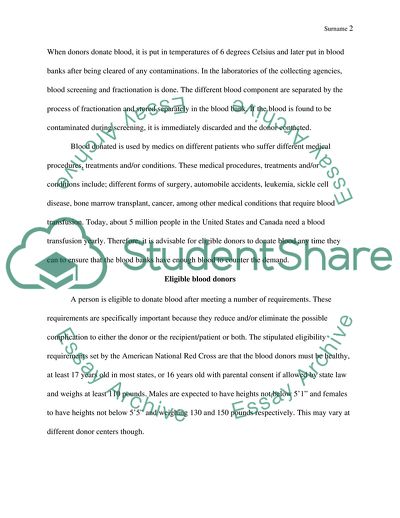Cite this document
(Blood Donation and Its Purpose Research Paper Example | Topics and Well Written Essays - 2000 words, n.d.)
Blood Donation and Its Purpose Research Paper Example | Topics and Well Written Essays - 2000 words. https://studentshare.org/health-sciences-medicine/1815955-research-paper-on-blood-donation
Blood Donation and Its Purpose Research Paper Example | Topics and Well Written Essays - 2000 words. https://studentshare.org/health-sciences-medicine/1815955-research-paper-on-blood-donation
(Blood Donation and Its Purpose Research Paper Example | Topics and Well Written Essays - 2000 Words)
Blood Donation and Its Purpose Research Paper Example | Topics and Well Written Essays - 2000 Words. https://studentshare.org/health-sciences-medicine/1815955-research-paper-on-blood-donation.
Blood Donation and Its Purpose Research Paper Example | Topics and Well Written Essays - 2000 Words. https://studentshare.org/health-sciences-medicine/1815955-research-paper-on-blood-donation.
“Blood Donation and Its Purpose Research Paper Example | Topics and Well Written Essays - 2000 Words”. https://studentshare.org/health-sciences-medicine/1815955-research-paper-on-blood-donation.


